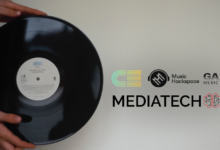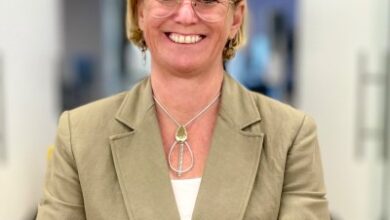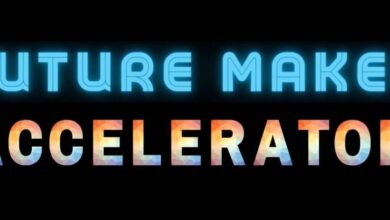
Meet contentpreneur and media maven Amanda Horvath, founder of www.amandahorvath.com and the “DIY Video Roadmap” online course.
From a young age, Amanda knew she wanted to be behind a camera and it was her mother that would help fuel her enthusiasm and passion to pursue a career in film/production. After attending classes at Austin Film Society, she relocated to L.A. and quickly found herself trapped in the hustle and bustle, instead of focusing on what she loved, helping business owners tell their story.
Her longing for home and new found passion for marketing brought her back to Austin, TX where she would end up working with high profile influencers and businesses all over central Texas. Her YouTube channel is quickly approaching 25k subscribers, helping people and companies globally learn how to tell their story and share it with the world.
So I want to get right into it. You have been producing content for a long time now. And I want to go back. What got you interested, was it something at a young age that really got you interested in film and production? What kind of inspired you to go down the path of creating content?
Amanda: So I wish that I could remember who it was that asked me this question. I think maybe even going into ninth grade. Someone asked me if I could do anything if it was a talent that didn’t matter. You could be a basketball player if you wanted, even though I’m only five or whatever. What would you be? And out of nowhere, I was like, I would be a film director. And my mom heard that and it was like, oh, that’s interesting. Let’s put her in some Austin film school classes. I actually took a class with adults, because that was the only time I could take it. And that kind of got me interested and then joined a media program at my school where we announced the news every day via a news channel or whatever. And then, yeah, that was kind of the kickstart of everything.
So what I’m curious about is, you were at CBS, you did some festival work on the entrance side, what pushed you to go your own way instead of trying to work in these bigger kinds of production and media organizations?
Amanda: I was living in LA after graduating working for a Film Festival as a programming coordinator. So that internship turned into an actual job. And essentially, it was my first insight into entrepreneurship and the excuse, my language shit shows that it can be behind the scenes. And I was essentially a child between two divorcing parents of two co-founders that couldn’t get along. And I saw this experience of okay, here, they are running this festival that’s doing pretty well, it’s getting out there, it’s getting press, and it’s a total mess behind the scenes. So if they can do this, I can do this too. So I decided, after splitting ways with them I wanted to start freelancing, just kind of testing out making videos on my own with different businesses in my area, I knew I wasn’t going to live in LA forever. And if I was going to live there, I had to live near the beach. I was not going to live in a concrete jungle. So I had to almost out of necessity start working in my area, freelancing instead of plugging into the more corporate world of Hollywood. So that’s kind of how that initially got kick-started in terms of working with business owners. And then I fell in absolute love with working with them and helping their vision turn into a reality and getting them in front of new audiences getting new eyeballs on their stuff. And I became obsessed with marketing.
How do we actually take a video and get it seen and get results with that video? So I started testing tons of different approaches to figure out what works, what doesn’t work and started to kind of get the hang of it.
What were some of the big challenges early on that you saw, trying to bridge that gap? And what were some big aha moments for you that were like, oh, this is how it works, and this is what we need to focus on to really bring those stories to life?
Amanda: I took B school with Marie Forleo, when I started my business, I’ve always been the kind of person and this continues to be the case that whenever I’m going into something, I’m going to learn from the pros and then iterate from there. So I was like, okay, how do I personally market my business? How do I get myself out there to start getting clients in one of the most competitive cities for video, right, LA? It kind of started with me to a certain extent, working on my own marketing. But as I started learning about online marketing, learning through her listening to Amy Porterfield, online marketing, made an easy podcast, which was a huge influence for me early on, as well as still to this day. And I started kind of telling these business owners, I was like, hey, I noticed like, you don’t have a way to grab people’s emails, why don’t you start adding a freebie, maybe let’s start testing out having a video that promotes that freebie, and just starting to kind of tweak and test and try this and try that. So it wasn’t necessarily like one big aha moment, it was more so the iteration overtime to figure out like, here I am, I’m creating videos for businesses. And if these videos don’t actually do anything for the business, then I’m gonna have to constantly find new clients. So I better figure out how to make these videos actually work.
So what brought you back to Austin? And what was that transition like going from L.A. notoriously known for the entertainment industry, connections, people, and contacts at your fingertips to Austin, where they cut the film incentives, we’re still trying to figure out who we are as a city. What was that like?
Amanda: I had this theory when I was leaving LA I was like man, you have to be a cog in the wheel to really fit in here. And I don’t feel like a cog in the wheel. I feel like I’m an entrepreneur, I want to do my own thing. And being an entrepreneur in LA is a whole different game than playing one role on a film set kind of thing. And my audience was small business owners and entrepreneurs and Austin, the town that I actually grew up in, was blowing up. And it was the number one city to start a business. There were so many entrepreneurs, he was the next up and coming to Silicon Valley. And I knew that I didn’t want to live in LA forever. But something inside of me was like LA is a dying city. People that are saying here, you’re running so fast, you’re running on the treadmill, it’s so expensive, you can’t get traction in your business. Why don’t I go back to Austin and try making this happen? My family was here too. So that was a big draw as well. I got here. I became a big fish in a little pond, landed some big clients within weeks of arriving. And I was like, okay, no, looking back, this is amazing. I doubled my rates within the first year of being here. And yeah, it just went super well.
Some of those big clients are really well-known influencers, how did you find that niche or at least a demand for those types of clients?
Amanda: I had taken all of the marketing efforts that I was doing in LA and when I moved to Austin because I had to be so cutting edge when I was living in LA in order to just survive. When I got here, those things took off. So I was the number one videographer on Yelp, I had really good SEO going for me, I would post on craigslist, which actually got me a lot of great leads. And it was through a matter of connections, I was also really into networking. So I hit the ground running and every networking event I’d go to I’d say I do video marketing, and boom, I need your work, blah, blah, blah, I’m trying to do that. So it was a random string of connections, a girlfriend that I met whose friend owns a hostel that we went over to that he happens to be business partners with Ryan Holliday, who then connected me with these other influencers. So that’s kind of how it happened.
We are now in the era of COVID. Where if you’re a non-essential business owner, and you don’t have an online presence, and or media, you don’t exist. So have you noticed since March, a lot more people are either digesting your content or coming to you to figure out what they should be doing and what they should be working on? Or because people are so financially strapped, Are you finding that they’re starting to pull back more on this idea of marketing because they’re just trying to survive?
Amanda: I think the things that I’ve been saying for the past however many years people are finally listening, you gotta have an online presence. If you don’t have it whatever. It’s like having a website X number of years ago, if you don’t have a website, you’re going to be irrelevant very quickly. Well, video is kind of the same thing, you have to learn the necessary skills to be able to have your content be seen in today’s world, oversaturated world. So I started the year off with, I believe it was 4400 subscribers, and I’m coming up to 22,000 now, so it definitely has spiked in terms of the interest.
Can you talk a little bit about what your thought processes are your strategy around how to approach content? And then thinking about it from the top down, I start with this one piece. And then it branches into all of these different elements in different buckets of social assets.
Amanda: I really like to start with the individual, first and foremost, so whether you’re a business owner running a big business, or you’re a solopreneur, and it’s just you and lonesome self, making it happen. I believe that having a personal brand in today’s world is going to help you no matter what, you can always drive traffic back to your business. And it’s almost like this online resume to a certain extent today. So I like to really start by digging into people’s past and looking at who you are, that is one of the hardest questions to answer outside of what you currently do? Who are you? So it’s starting with looking at the patterns that have really popped up throughout your life, like, what areas of the study did you like in elementary school and middle school, high school, college, and digging into those to start to recognize, oh, okay, there are some patterns here, things that have popped up throughout my life. And if I build my online persona on those patterns, I can rest assured that those patterns are going to continue into the future, no matter what I choose to do. So as entrepreneurs, we love to change businesses, every couple of years, we sell one, we do whatever. So if you base it off of who you truly are your online persona, then I think that is the absolute best place to start.
How do I know what platform is right for me? What would you recommend for people on how to find what’s most comfortable for them from a platform standpoint?
Amanda: I said LinkedIn, and if you are at all related to the business space, I would highly recommend going in on that just because you’re going to get traction really quickly. And I believe that no matter what platform you should start on, if you are going to be going all-in with video, eventually you want to end up on YouTube because you’re not going to be running on that hamster wheel. So let’s just say initially, the options are Facebook, LinkedIn, or Instagram, you could do Tik-Tok. Personally, I haven’t gotten into tik tok because of the whole Chinese government conspiracy kind of stuff going on. I think that the decision comes down to you personally, where do you spend the most time, because when you’re creating on a platform, you’re going to have so much better engagement, if you are also going on the platform and engaging. I think that’s something really to consider, in some ways, Facebook and Instagram are similar to the stories component like Instagram stories, and creating on there can both be posted to both. And that’s one of the easiest ways to create is just not have to edit anything.
What are some exercises that may be early on that help you get over the fear of being in front of the camera, and what does that look like? What would you recommend for people? What are some resources that you constantly go back to, or podcasts, obviously, you mentioned one earlier that you listened to or books that really helped you along your way as well?
Amanda: So I recently came up with a framework. So I have an online course called the DIY video roadmap that teaches people the fastest way for creating video content so that they’re not spending forever doing it. And that goes everything from like setting up your sets to like what gear to have all the way to editing. And within it, I talk about how to get comfortable in front of the camera and the exercise. This one exercise will get you comfortable within less than 15 minutes, and it will spike you on camera performance really quickly. So what you do is you sit down in front of the camera, and you could do this today, and I challenge you to do it. Okay. So put your camera down, I don’t want you to hold it because you’re going to be using your hands. And you’re going to first you’re going to come up with a phrase just say like, I’m Amanda Horvath, and I’m testing out my on-camera personality. Let’s say that that’s the phrase, you say in your regular voice, first and foremost, then you’re going to say it with 25% more excitement, then do 50% more excitement with hands and shoulder and head movement. It makes a really big difference when you do that. So much more engaging. So do that and then do it 75% the same thing with the hands and then go 100% over the top look ridiculous. You’re gonna watch it back and realize, oh, that’s why I look like a serial killer in my videos. Because I have zero energy and I’m talking with my regular voice.
So it’s all about like a smile while you talk, be louder than you think that you should be used, your hands move around. And just that one exercise I’m telling you to do it and tag me if you do it in social media, like send it to me or whatever. It’s a great exercise.
So follow up to that the second part. What were some books early on that really helped you in podcasts you constantly go back to or that you’re listening to now?
Amanda: Yeah, online marketing made easy. Amy Porterfield has always been my North Star when it comes to this stuff for sure. Books and podcasts are actually the one thing is huge for me. I’m all about focusing and not spreading yourself thin. So what is the one thing you can do such that by doing it makes everything else easier or unnecessary, Huge? Their podcast is incredible. I’m a total course junkie. So I’ve taken so many courses. You know, it’s interesting because I’ve fallen off the podcasting recently now that COVID like not driving in the car. I’m not going to a gym, which is usually when I listen to the podcasts. Social Media Examiner podcast is awesome. I think he does an amazing job with that. Engage Video Marketing podcast for video is also fantastic run by Ben in Australia. I love Esther Perils totally differently.
My favorite question that I asked everybody if you had a superpower, what would that be?
Amanda: I would love to become a fly on the wall and be able to just sneak into different areas just go into someone’s house. Let’s just see what this person is really like behind the scenes.
What’s the best way for people to get a hold of you? How do they find you? How do they get a hold of you? And when people think about Amanda Horvath, what are you hoping comes to mind for them?
Amanda: First thing is Amanda Horvath.com, it’ll have all my social media accounts, and also the quick start guide video that I highly, highly recommend anyone that’s looking to get started with video, it helps find your first five video topics, write your explainer statement, which describes what you do, as well as that first script so that you can really get up and running with it in a way that people actually will want to watch your videos. So really recommend that. And then obviously, YouTube is a great resource as well for free tutorials. What do I want people to think about when they think about Amanda Horvath, I am all about the personal development side of the video. So I would love for people to think about that. I kind of recently have been playing around with this video really has a spiritual component to it. You are called to video. It’s like this whisper in your ear like you should do video. And it doesn’t make sense. You have all these other things going on in your business. And yet when you listen to the call, and you start taking action on it, even though it doesn’t make sense, it leads you on a journey that you’ve never expected to begin with so for me, that’s what I would love for people to think about. Not necessarily the technical side, I offer that of course, I offer the fastest way to create videos, but I think that the spiritual journey that comes along with it.
To keep up-to-date with community spotlights and more, subscribe to our weekly newsletter here.






